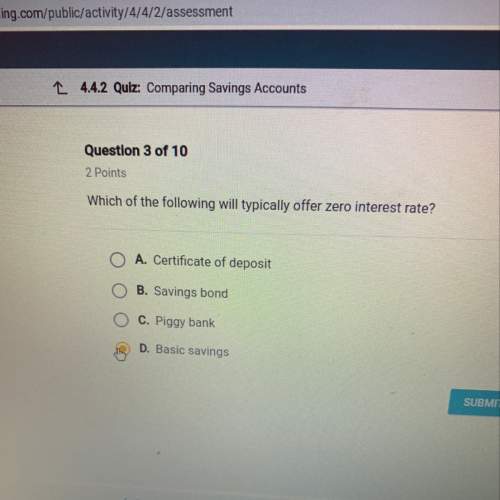
Electronics Unlimited (EU)was considering the introduction of a new product that had 5 years of life and was expected to generate sales in Year 1 through 5 as the following:
col1 Year 1 Year 2 Year 3 Year 4 Year 5
col12 $10,000, 000 $13,000,000 $13,000,000 $8,667,000 $4,333,000
No material levels of revenues or expenses associated with the new product were expected after five years of sales. Based on past experience, cost of sales for the new product was expected to be 60% of total annual sales revenue during each year of its life cycle. Selling, general and administrative expenses were expected to be 23.5% of total annual sales. Taxes on profits generated by the new product would be paid at a 40% rate.
To launch the new product, EU would have to incur immediate cash outlays of two types. First, it would have to invest $500,000 in specialized new production equipment. This capital investment would be fully depreciated on a straight-line basis over the five-year anticipated life of the new product. There would be no salvage value left for the equipment at the end of its depreciable life. No further fixed capital expenditures were required after the initial purchase of equipment.
Second, additional investment in net working capital to support sales would have been made. EU generally required 27 cents of net working capital to support each dollar of sales. That is, change in net working capital is 27% of change in sales. As a practical matter, the buildup of working capital would have to be made at the beginning of the sales year in question (or, equivalently, by the end of the previous year). For example, Sales in year 2 were expected to be $13,000 thousand, $3,000 thousand increase from Year 1’s sales, so a buildup of working capital of 27% of $3,000 should be made at the end of Year 1. i. e., the change in net working capital for year 1 is $3,000*27%=$810 thousand. At the end of the new product’s life cycle, all remaining net working capital would be liquidated and the cash recovered.
Finally, EU expected to incur tax-deductible introductory expenses of $200,000 in the first year of the new product’s sales. Such cost would not be recurring over the product’s life cycle. Approximately $800,000 had already been spent developing and testing marketing the new product.
2-a) estimate the new product’s cash flows. (3 points)
2-b) Assuming a 20% cost of capital, what is the product’s net present value? What is its internal rate of return? Should EU introduce the new product? Explain why? (2 points).
Note: Except for the change in net working capital, which must be made before the start of each sales year, you should assume that all cash flows occur at the end of the year in question. To find the NPV, you need to estimate the free cash flow in each year and discount them at cost of capital of 20%.

Answers: 3


Another question on Business

Business, 22.06.2019 14:00
Bayside coatings company purchased waterproofing equipment on january 2, 20y4, for $190,000. the equipment was expected to have a useful life of four years and a residual value of $9,000. instructions: determine the amount of depreciation expense for the years ended december 31, 20y4, 20y5, 20y6, and 20y7, by (a) the straight-line method and (b) the double-declining-balance method. also determine the total depreciation expense for the four years by each method. depreciation expense year straight-line method double-declining-balance method 20y4 $ $ 20y5 20y6 20y7 total $
Answers: 3

Business, 22.06.2019 19:30
John's pizzeria and equilibrium john is selling his pizza for $6 per slice in an area of high demand. however, customers are not buying his pizza. using what you learned about the principles of equilibrium, write three to four sentences about how john could solve his problem.
Answers: 1

Business, 22.06.2019 20:30
The research of robert siegler and eric jenkins on the development of the counting-on strategy is an example of design.
Answers: 3

Business, 23.06.2019 03:00
For example, the upper right cell shows that if expresso advertises and beantown doesn't advertise, expresso will make a profit of $15 million, and beantown will make a profit of $2 million. assume this is a simultaneous game and that expresso and beantown are both profit-maximizing firms. if expresso decides to advertise, it will earn a profit of $ million if beantown advertises and a profit of $ million if beantown does not advertise. if expresso decides not to advertise, it will earn a profit of $ million if beantown advertises and a profit of $ million if beantown does not advertise. if beantown advertises, expresso makes a higher profit if it chooses . if beantown doesn't advertise, expresso makes a higher profit if it chooses . suppose that both firms start off not advertising. if the firms act independently, what strategies will they end up choosing? expresso will choose to advertise and beantown will choose not to advertise. expresso will choose not to advertise and beantown will choose to advertise. both firms will choose to advertise. both firms will choose not to advertise.
Answers: 1
You know the right answer?
Electronics Unlimited (EU)was considering the introduction of a new product that had 5 years of life...
Questions


English, 06.03.2020 03:23








Social Studies, 06.03.2020 03:25



Mathematics, 06.03.2020 03:25

Mathematics, 06.03.2020 03:26

Mathematics, 06.03.2020 03:26


Mathematics, 06.03.2020 03:26


Mathematics, 06.03.2020 03:27




